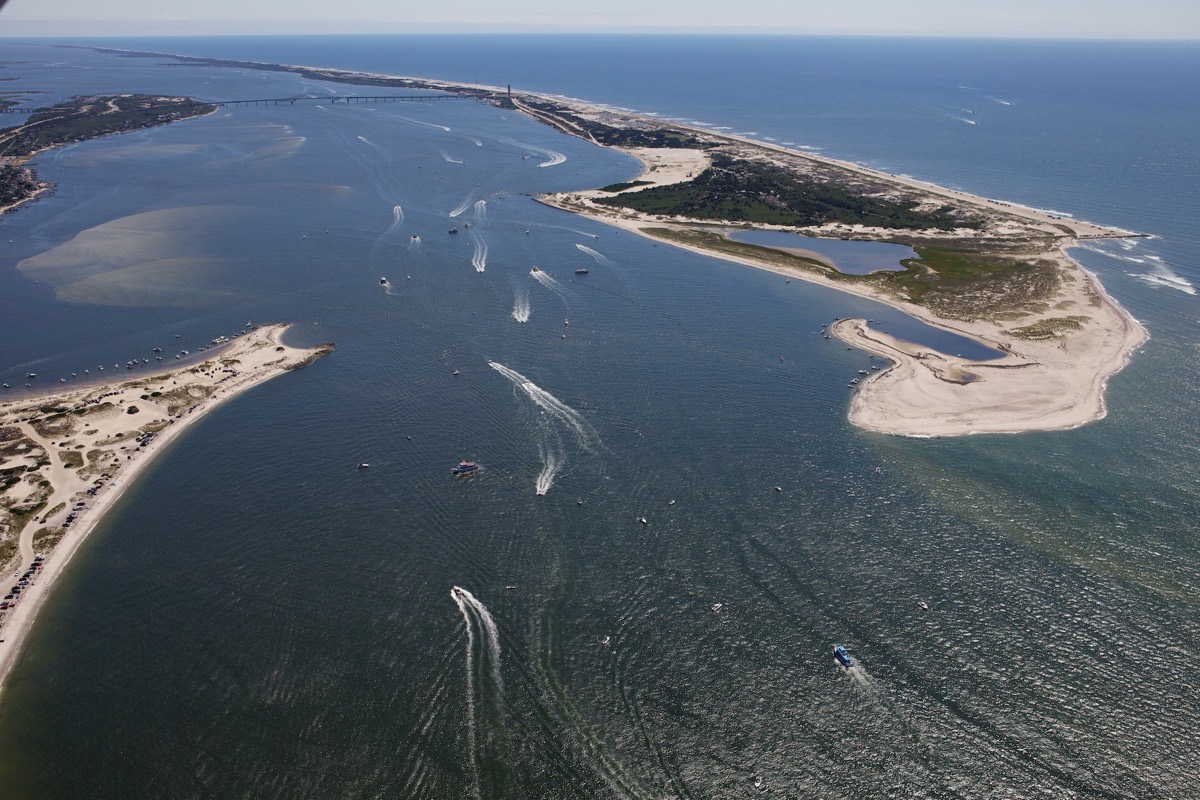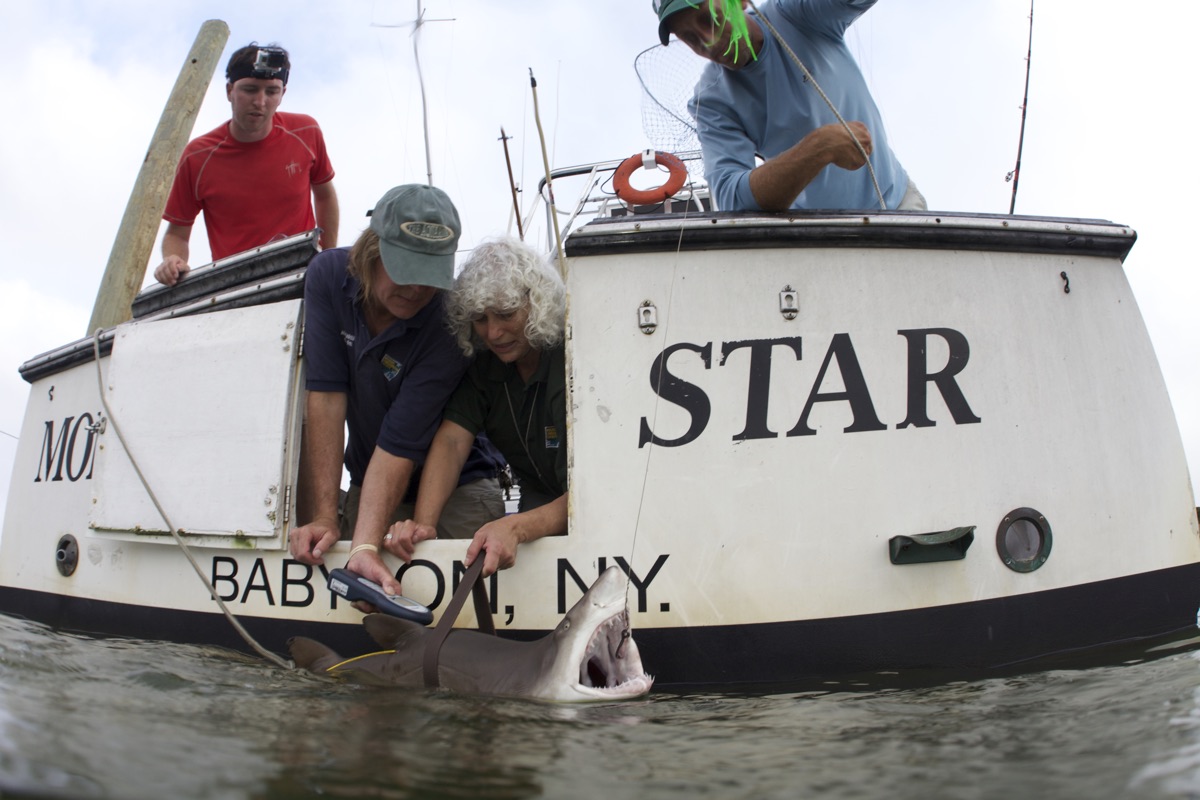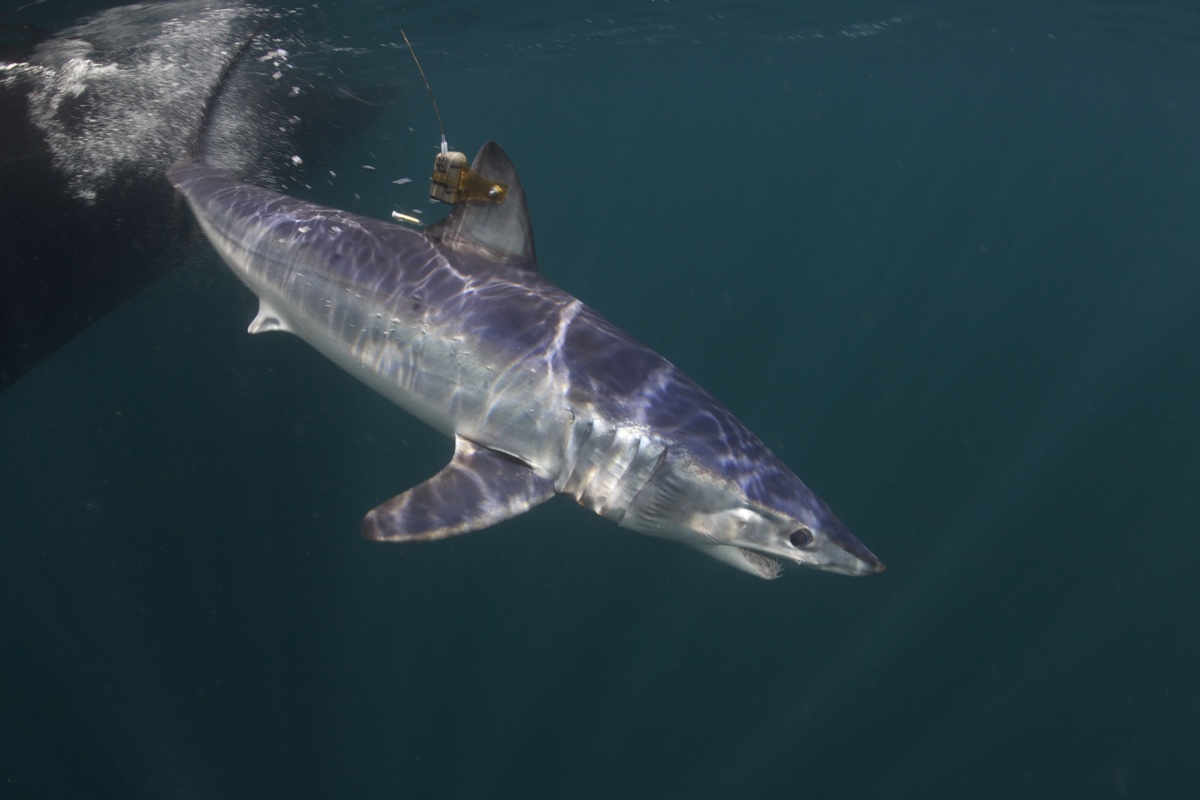
Why a New York Bay Is Crucial to Baby Sand Tiger Sharks

Dr. Merry Camhi is director of the WCS New York Aquarium's New York Seascape Program, an initiative of the Wildlife Conservation Society. She has a doctorate in ecology from Rutgers University. Camhi contributed this article to Live Science's Expert Voices: Op-Ed & Insights.
Yes, it's that special time again — Shark Week, the Discovery Network's celebration of all things chondrichthyan, when sharks are on the air … and in our waters.
In urban New York City, mention "shark" any other time of year, people might think of lawyers, cards and loans. Most folks are surprised to learn that at least 26 species of sharks and 14 species of skates and rays (sharks' close cousins) ply the coastal and offshore waters of New York, especially from spring to fall.
As a native New Yorker, I may be a bit biased, but I think New York is a great place for kids to grow up, having raised two wonderful ones of my own here. Apparently, a number of these shark species think New York is a great place for their kids to grow up, too. [See Photos of Baby Sand Tiger Sharks]

How do we know? For the past five summers, my team of scientists at the Wildlife Conservation Society's New York Aquarium has been studying sharks in New York's waters. We have been applying a variety of acoustic and satellite tags to several shark species (sand tigers, shortfin makos, blue sharks, white sharks and others) to gain a better understanding of when they're here, the habitats they use and their migration patterns.
And what we're learning is that, for some of these species, like sand tiger and white sharks, New York's coastal waters are like a giant playpen or summer camp. Just like my daughter, who migrated to the North Fork of Long Island each summer for sleep-away camp, young sharks spend their summers hanging around Long Island and New York City.
But unlike my kids, juvenile sharks neither need nor receive any parental care. Once pupped (the term we use for a shark being born), these babies are on their own to find food and seek shelter from a variety of threats.
Sign up for the Live Science daily newsletter now
Get the world’s most fascinating discoveries delivered straight to your inbox.

This may help explain why these small, young coastal sharks migrate very long distances from their pupping or wintering grounds — from as far south as the Carolinas or far offshore — to spend the summers of their youth in productive estuaries (or those full of food) and nearshore waters. Not only here in New York, but all over the world.
Studies suggest that these highly productive habitats are attractive as nurseries because they can provide a plentiful source of food for growing young sharks. Coastal estuaries and bays may provide yet another benefit: They offer these small juveniles protection from their main predators — large adult sharks — which tend to steer clear of shallow estuaries.
Over the past few years, our tagging study has confirmed that Great South Bay off Long Island serves as an important nursery for juvenile sand tiger sharks (the toothy shark you often see in aquariums like ours in Brooklyn's Coney Island). We are also trying to spread the word that this species is now protected — and should not be fished — because fishing over the years has significantly depleted their numbers. The sand tiger shark is listedas "vulnerable"on the Red List maintained by the International Union for Conservation of Nature (IUCN). [Photos: How to Tag a Hammerhead Shark]

To date, we have tagged more than 40 sand tiger sharksin Great South Bay, all of them juveniles — from recently pupped to 5-year-olds. But for me, one of the most interesting things we've found is that these young sharks like to hang out together (sometimes in the oddest locations) and that they come back each summer to the very same spot in the bay. Once they're here, they are pretty sedentary (dare I say like lazy teenagers, taking it slow on summer vacation?).
Early analysis of data from those tags suggests these juveniles hang out near the bottom in their favorite spots, venturing to other areas of the bay only once every few days, maybe to grab dinner outside the nursery. And that's what we're trying to sort out now: Why do these young sharks pick these specific areas; how do they use the rest of the bay; and where do they go after leaving the bay in early fall to spend their winter?
Some people are concerned when they hear that we are catching sharks (some reaching 5 feet, or 1.5 meters, long) in the bay, where people swim and fish and play. We try to reassure them that sand tiger sharks have probably been using this bay as a nursery for centuries, and certainly when the sharks frolicked in these same waters as kids themselves. And why not? New York is a great place to grow up!
Follow all of the Expert Voices issues and debates — and become part of the discussion — on Facebook, Twitter and Google+. The views expressed are those of the author and do not necessarily reflect the views of the publisher. This version of the article was originally published on Live Science.









